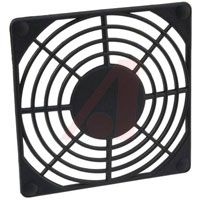
Brand
- Sandvik Coromant 22.617
- Iscar 9.756
- Shire 2.714
- Portwest 2.292
- Routledge 2.106
- ERICKSON 1.859
- Kennedy 1.711
- Mascot 1.483
- Moon Magic 1.467
- Sealey 1.418
- Blue Spot Tools 1.286
- Ace & K 1.149
- Laser Tools 1.102
- Pferd 1.049
- OX Tools 930
- CRC Press 816
- CARLYLE HAND TOOLS 752
- Indexa 738
- Torkoscar 712
- KM Systems 706
- METALMATE 620
- Fast Mover Tools 612
- Teng Tools 538
- Slingsby 501
- Walter 462
- Sherwood 459
- Gedore 396
- Mountz 395
- Teng 384
- Safety Tools 381
- Savings Store 381
- ITL Insulated Tools Ltd 375
- Pulse Fitness 370
- MonsterShop 369
- York 357
- MAUSER 344
- Blaklader 340
- Draper 339
- MTP Products 336
- Primal Strength 325
- Stanley 322
- KS Tools 313
- Medway 311
- Hitachi Cutting Tools 304
- Titleist 303
- Chapman & Hall 288
- DeWalt 286
- Edit 280
- Dunlop 271
- 3M 270
- Fabufacture 267
- Kennametal 267
- EUROKRAFTpro 259
- Vargus 256
- Evolution Power Tools 250
- Outsunny 248
- Markberg 245
- Bibielle 241
- Life Essentials 227
- Wiha Tools 217
- Faithfull 211
- RampCentre 209
- Rittal 200
- Ansell 199
- GROOVEX 193
- T & A Precision Silver Steel 193
- Bosch 188
- SIMON, EVERS & CO. GMBH 178
- Beeswift 177
- Casall 177
- Style and Chic 175
- The Home Maker 175
- All Things Good 167
- Merkel Designers 167
- Beta 163
- Laser 163
- Rhodes + Scholes 162
- Bessey 161
- Pioner 161
- Sunflower 158
- Unbeatable Bargains 150
- Mizuno 144
- Bahco 143
- Direct Imports 143
- Guilford Press 141
- Bott 140
- Mercia 140
- R and M Furniture 140
- Sia Abrasives 137
- Millennium Furniture 136
- Klein Tools 135
- King Dick 134
- Bisley Workwear 132
- KAISER + KRAFT GMBH 132
- Sid & Sam 130
- Starrett 127
- Total Tools 124
- Premier 123
- ABSTRACTA AB 121
- Brittle & Co 120
Colour
- Black 2.946
- Blue 762
- White 724
- Silver 709
- Grey 643
- Red 553
- Blue/White 526
- Green 479
- Navy 436
- Yellow 309
Size
Gender
Merchant
- Zoro UK Limited 73.826
- Routledge 3.773
- Home Done 3.150
- RS Components UK 1.907
- QD Stores 1.805
- Cherry Lane 1.541
- Moon Magic 1.467
- K4G.COM 1.327
- Home Living Luxury 907
- Workwear Supermarket 845
- Craigmore UK 706
- MyTrendyPhone.co.uk 593
- Golf Gear Direct 430
- Click Golf 355
- Seal Medical 342
- AndLight.co.uk 292
- Cowling & Wilcox 273
- markberg.com 245
- Vivomed 239
- Acorn Fire & Security 237
- Mobility Smart 227
- greenyogashop 213
- Glisshop uk 195
- Car Smart 183
- Marks & Spencer UK 161
- AB1GK 145
- Plusshop UK [OLD] 140
- Building Plastics Online 128
- Suit Direct 120
- Erysta 114
- Unibos Store 113
- Maroxe 105
- Mskeyify 101
- Donaghy Bros UK CSS 97
- Selfmade.com 96
- Belveto 79
- uk.plusshop.com 70
- Onlynaturals 61
- Bioethanol-Fireplace.co.uk 59
- Essential Photo 55
- Gordons Direct 55
- Haynes.com UK 44
- Grace & Co Jewellery 41
- YouGarden 41
- Univelve 38
- Peel & Paper 36
- Lighthouse Clothing 35
- Retro Star 35
- Dell 34
- innovatetools 34
Price (EUR)
- <5 4.464
- 5 - 10 4.209
- 10 - 20 6.791
- 20 - 50 13.427
- 50 - 100 13.863
- 100 - 200 18.055
- 200 - 500 18.397
- >500 18.636



















